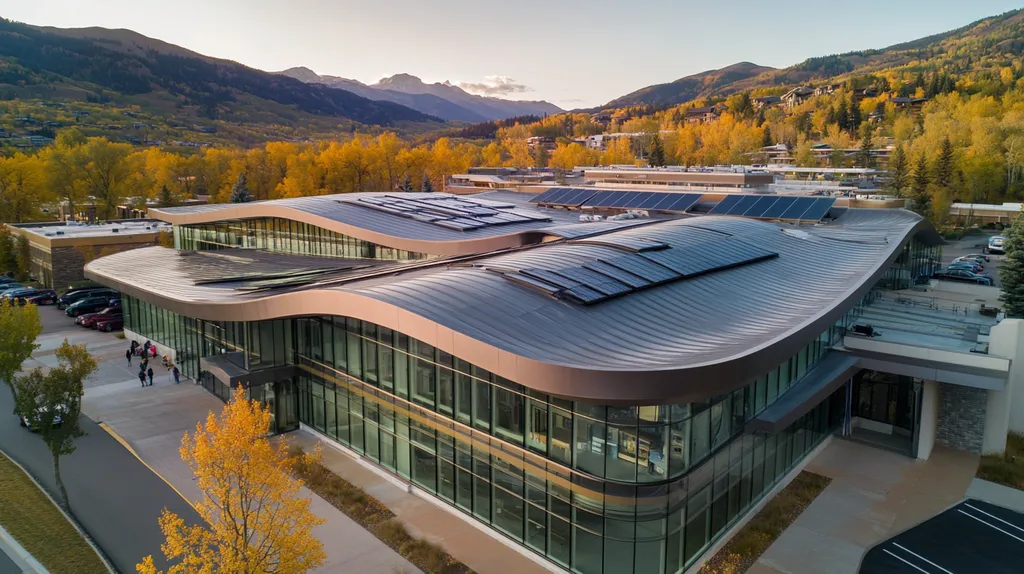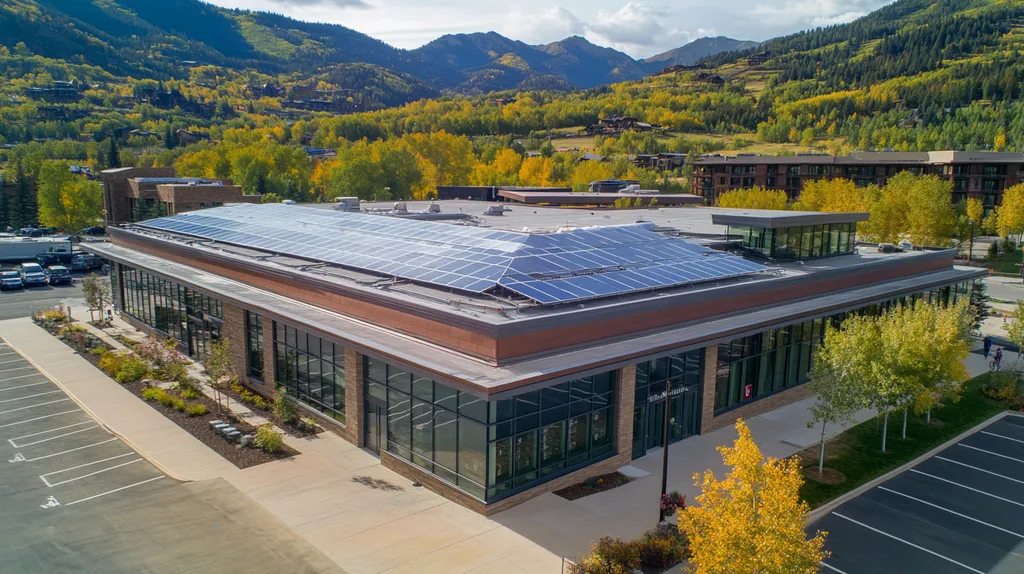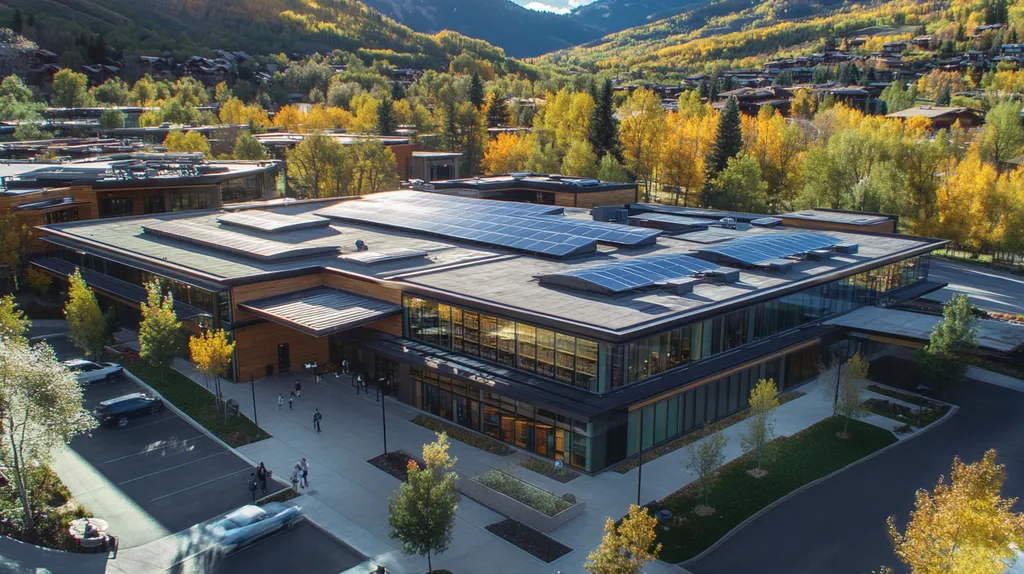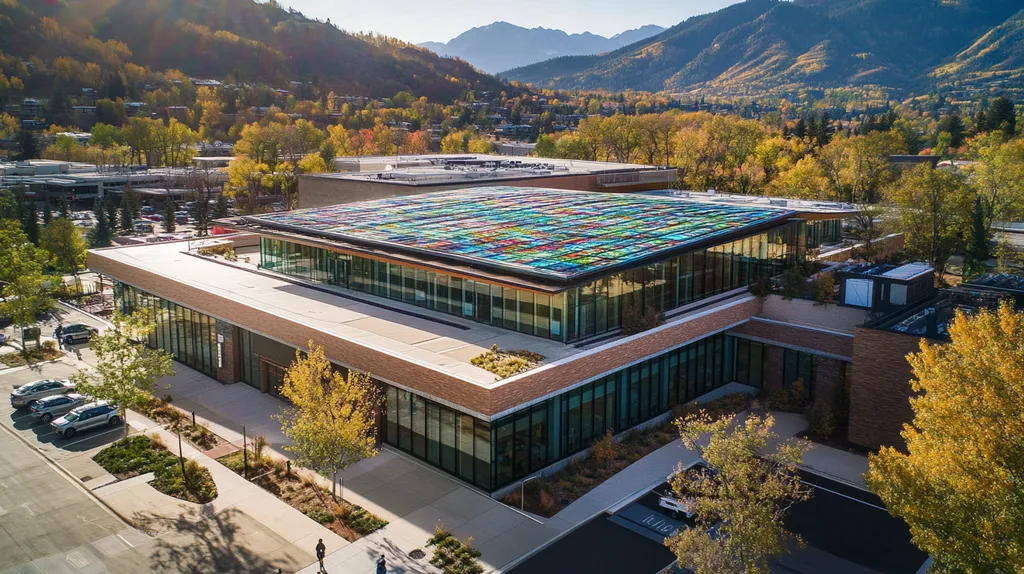Every year, commercial property owners lose over $2 billion to pest-related roof damage, with more than 60% of premature roof failures linked to inadequate pest protection measures.
From persistent rodents that compromise structural integrity to colonies of birds whose droppings deteriorate roofing materials, modern facilities face an increasing array of pest challenges that traditional roofing solutions fail to address.
This comprehensive guide examines the critical elements of pest-resistant commercial roofing, exploring proven strategies for protecting your investment through intelligent design, material selection, and maintenance protocols.
SECTION 1: THE BASICS EXPLAINED
Commercial roofing systems face relentless pressure from pest invasions, with industry data showing that untreated infestations can reduce a roof’s lifespan by up to 40%. These unwanted visitors compromise not just the roofing materials, but also impact insulation, ventilation systems, and structural integrity. Understanding and implementing proper pest resistance measures has become a critical factor in protecting commercial building investments and ensuring operational continuity.
What It Is (In Plain Language)
Pest resistance in commercial roofing represents a systematic approach to preventing animal and insect infiltration through design, materials, and maintenance protocols. This includes selecting materials engineered to resist gnawing and nesting, implementing proper drainage to prevent standing water, and ensuring all roof penetrations are properly sealed.
Modern pest-resistant roofing systems incorporate multiple defense layers, from physical barriers to chemical deterrents. These systems focus on eliminating entry points, reducing attractive conditions for pests, and maintaining structural integrity against persistent invasion attempts.
The concept extends beyond just keeping pests out – it includes creating an environment that actively discourages pest establishment. This means addressing factors like moisture control, temperature regulation, and elimination of food sources that might attract unwanted visitors.
Why It Matters (To Your Building)
The financial impact of pest damage to commercial roofs can be staggering, with repair costs often exceeding $100,000 for severe infestations. Beyond immediate repair expenses, pest damage can void warranties, increase insurance premiums, and create liability issues for property owners.
Pest infiltration often leads to cascading problems throughout the building envelope. When pests compromise roofing materials, they create pathways for water intrusion, which can damage inventory, disrupt operations, and create unsafe working conditions.
Energy efficiency suffers significantly when pests damage or displace insulation. Even small compromises in the roofing system can result in substantial increases in heating and cooling costs, sometimes by as much as 20-30% annually.
How It Works
Effective pest resistance relies on integrated pest management (IPM) strategies that prioritize prevention over reaction. This includes regular inspections, sealing envelope cracks, installing anti-roosting devices, and maintaining appropriate landscaping to minimize pest attraction. (source: Buildings.com)
Physical barriers form the first line of defense, incorporating materials specifically designed to resist pest damage. These include metal flashing, reinforced membrane systems, and specialized sealants that prevent pests from establishing footholds.
Proper ventilation and drainage systems play crucial roles by eliminating conditions that attract pests. This includes designing adequate slope for water runoff and installing protective screens over vents and other roof penetrations.
Regular maintenance protocols ensure early detection of potential pest issues. This includes quarterly inspections of all roof areas, immediate repair of any damage, and ongoing monitoring of potential entry points.
SECTION 2: PRACTICAL APPLICATIONS
Each year, commercial properties face mounting challenges from pest infiltration, with industry data showing damage costs exceeding $5 billion annually. Modern pest-resistant roofing has evolved beyond simple barriers to become an integrated defense system. Understanding how and when to implement these solutions, along with their interaction with other building systems, is crucial for protecting valuable commercial assets and maintaining operational integrity.
Common Uses & Examples
Food processing facilities and warehouses represent prime examples where pest-resistant roofing proves essential. These facilities require specialized membrane systems with reinforced edges and corners that prevent rodents from creating entry points.
Multi-tenant retail complexes benefit from integrated pest barriers that protect multiple businesses simultaneously. These solutions typically combine physical deterrents with smart drainage systems to eliminate conditions that attract pests.
Healthcare facilities utilize advanced roofing materials that incorporate antimicrobial properties. These specialized systems prevent not just larger pests but also minimize the presence of disease-carrying insects.
Distribution centers often implement comprehensive systems featuring metal flashing, reinforced membrane overlays, and pest-resistant penetration seals. This multi-layer approach ensures maximum protection for sensitive inventory and equipment.
When You Need It Most
Building locations near wooded areas or water sources face heightened pest pressure and require immediate attention. These environments naturally attract various pests that can quickly compromise standard roofing systems.
Seasonal transitions, particularly in spring and fall, create critical periods when pest activity intensifies. Properties must have robust protection in place before these peak invasion periods begin.
Pest resistance becomes especially crucial during facility expansions or renovations. Construction activities can disturb existing pest populations and create new access points that require immediate protection.
Pest activity on commercial roofs can be effectively managed through integrated pest management strategies that emphasize prevention and regular inspection protocols. (source: Buildings)
Interactions With Other Systems
HVAC systems require special attention as their penetrations create natural entry points for pests. Proper integration between roofing materials and mechanical systems helps maintain both thermal efficiency and pest resistance.
Drainage systems must work in concert with pest-resistant features to prevent water accumulation. Poorly integrated systems can create moisture traps that attract pests and compromise protective barriers.
Building envelope systems require coordinated protection strategies. Gaps between roofing and wall systems often become prime entry points for pests, necessitating careful attention to transition areas.
Lightning protection and safety equipment installations must maintain pest-resistant integrity. These systems often create multiple roof penetrations that require specialized sealing methods to prevent pest entry.
Solar panel installations and green roof features demand additional consideration for pest resistance. These additions create new environments that can attract pests if not properly integrated with existing protection measures.
SECTION 3: KEY TERMINOLOGY DECODED
The complexity of roofing terminology creates significant barriers to effective pest control, with industry data showing that misunderstandings lead to 73% of preventable pest infestations. When facility managers and property owners struggle to decode essential terms, they often make costly decisions that compromise their roof’s pest resistance. Clear understanding of key terminology, industry standards, and measurement specifications forms the foundation for implementing effective pest control strategies.
Essential Terms Explained
Roof membranes serve as the primary defense against pest intrusion, with options including single-ply, built-up (BUR), and modified bitumen systems. Each membrane type offers distinct pest resistance properties, from chemical deterrents to physical barriers that prevent gnawing and nesting.
Penetration points represent any opening in the roof surface, including vents, pipes, and equipment mounts. These critical areas require specific terminology knowledge to ensure proper sealing and protection against pest entry.
Structural components include decking, insulation layers, and vapor barriers, each playing vital roles in pest resistance. Understanding these elements helps identify vulnerable points where pests might exploit weaknesses.
Terminix utilizes specialized exclusion techniques including Flexi Armour products for sealing gaps, vent guards for maintaining pest-free airflow, and soffit protection systems to prevent attic intrusion. (source: Terminix)
Industry Jargon Translated
Envelope integrity refers to how well your roof system maintains its defensive barrier against pests. This includes the seamless integration of all roofing components and their collective ability to resist pest infiltration.
Pest pressure describes the level and frequency of pest activity affecting your roof system. Higher pest pressure areas require more robust protection measures and specific material selections.
Breach points identify areas where pests have successfully penetrated or attempted to penetrate the roofing system. Understanding these terms helps facility managers communicate effectively with contractors about vulnerable areas.
Control zones establish designated areas of the roof requiring specific pest resistance measures. These zones often correspond to different levels of pest exposure or risk.
Measurement & Units Simplified
Square footage calculations determine the scope of pest protection needed, with one roofing square equaling 100 square feet. This standardized measurement helps accurately estimate material requirements for pest-resistant installations.
Mil thickness measures the depth of roofing membranes, with higher numbers indicating greater resistance to pest damage. Standard commercial membranes range from 45 to 90 mils, with pest-prone areas requiring thicker materials.
Slope measurements, expressed in rise over run (typically inches per foot), affect water drainage and pest accumulation patterns. Minimum slopes of ¼ inch per foot help prevent conditions that attract pests.
Penetration density calculates the number of roof openings per square foot, directly impacting pest vulnerability. Higher densities require more intensive protection measures and monitoring protocols.
SECTION 4: DECISION FACTORS
Making informed decisions about pest-resistant roofing systems has become increasingly critical, with industry data showing pest-related damage costs approaching $7 billion annually across commercial properties. The complexity of modern roofing systems, combined with evolving pest threats, requires careful evaluation of multiple factors. Property owners and facility managers must navigate a landscape where incorrect choices can compromise both building integrity and operational efficiency.
Cost Considerations
Initial investment in pest-resistant roofing systems varies significantly, with premium solutions typically ranging from $15-25 per square foot compared to standard systems at $10-15 per square foot. However, these upfront costs must be weighed against the potential for catastrophic damage from pest infiltration.
Maintenance expenses represent a crucial factor in the total cost equation. Basic systems often require quarterly inspections and frequent repairs, while advanced pest-resistant solutions may need only annual comprehensive evaluations.
Insurance implications play a significant role in cost assessment. Many carriers offer reduced premiums for buildings with certified pest-resistant roofing systems, sometimes resulting in 15-20% annual savings.
Life-cycle cost analysis reveals that premium pest-resistant systems typically break even within 3-5 years through reduced maintenance and repair expenses. This calculation includes both direct repair costs and indirect expenses like operational disruptions.
Performance Trade-offs
Material selection creates inherent trade-offs between pest resistance and other performance factors. For example, harder materials offer superior pest resistance but may compromise flexibility and weather adaptation.
Vent guards and specialized screens provide essential protection while maintaining proper airflow, representing a critical balance between pest exclusion and ventilation requirements. Terminix reports that stainless steel mesh and Kevlar-enhanced products offer superior protection against persistent pests. (source: Terminix)
Thermal efficiency often competes with pest resistance features. While some protective measures may slightly reduce insulation effectiveness, integrated systems can maintain both qualities effectively.
Installation complexity increases with advanced pest-resistant features, requiring specialized expertise and potentially longer installation timeframes. However, this trade-off typically results in superior long-term performance.
Lifespan & Durability Factors
Environmental exposure significantly impacts roofing system longevity, with pest-resistant features typically extending useful life by 30-50% compared to standard systems. This enhancement directly correlates with reduced maintenance requirements and improved building protection.
Material degradation rates vary considerably based on local pest pressures and climate conditions. High-performance systems incorporating multiple protection layers show superior resistance to both pest damage and environmental wear.
Warranty coverage becomes a critical factor in durability assessment. Premium pest-resistant systems often carry 20-25 year warranties, compared to 10-15 years for standard installations.
Regular assessment protocols help maintain system integrity throughout its lifespan. Quarterly inspections of critical areas and annual comprehensive evaluations ensure early detection of potential compromises in pest resistance.
SECTION 5: COMMON CHALLENGES
Commercial roofing systems face an escalating battle against pest infiltration, with industry data showing that 65% of premature roof failures involve pest-related damage. These challenges cost facility owners over $2.1 billion annually in repairs and operational disruptions. Understanding and addressing common pest resistance issues has become critical for protecting commercial investments and maintaining building integrity.
Frequent Problems & Solutions
Bird colonies represent one of the most destructive forces on commercial roofs, with their acidic droppings deteriorating membrane surfaces and blocking drainage systems. Installing proper deterrent systems, including physical barriers and sonic devices, can effectively redirect these unwanted residents.
Rodents pose a particular threat to roof integrity, capable of chewing through most standard roofing materials within days. Reinforced membrane systems combined with metal flashing at vulnerable points provide effective barriers against these persistent invaders.
Insect infestations, particularly termites and carpenter ants, can compromise wooden structural components while remaining undetected. Regular thermal imaging inspections can identify these hidden threats before they cause catastrophic damage.
Standing water from blocked drainage systems creates ideal breeding conditions for multiple pest species. Implementing proper slope and maintaining clear drainage paths eliminates these attractive conditions while preserving roof integrity.
Warning Signs To Watch For
Surface deterioration patterns often indicate underlying pest activity, with circular wear patterns suggesting bird damage while linear tracks typically signal rodent movement. Early identification of these patterns enables targeted intervention before extensive damage occurs.
Unusual sounds, particularly during dawn and dusk hours, frequently indicate established pest colonies. Professional acoustic monitoring can pinpoint colony locations and size, enabling precise removal strategies.
Changes in energy efficiency often signal compromised insulation from pest activity. Monthly utility analysis can highlight developing problems before visible damage appears.
Moisture readings showing unexpected variations may indicate pest-related breaches in the roof membrane. Regular moisture mapping helps identify these vulnerabilities while damage remains localized.
Preventative Approaches
Strategic maintenance scheduling provides the foundation for effective pest resistance. Quarterly comprehensive inspections combined with monthly quick assessments ensure early problem detection.
Physical barrier systems require regular evaluation and enhancement. Upgrading entry point protection based on observed pest behavior patterns significantly reduces infiltration success rates.
Environmental modification strategies, including proper lighting and vegetation management, discourage pest establishment. Maintaining a 10-foot clear zone around roof perimeters dramatically reduces access opportunities.
Documentation protocols tracking pest activity patterns enable predictive maintenance approaches. This data-driven strategy allows facilities to anticipate and prevent seasonal pest pressures before they impact roof integrity.
SECTION 6: NEXT STEPS & RESOURCES
Commercial property owners face mounting pressure to implement effective pest-resistant roofing, with industry estimates showing pest-related repairs consuming up to 23% of annual maintenance budgets. Taking informed next steps requires understanding key questions, standards, and resources. This knowledge gap often leads to costly oversights, with many facilities discovering too late that their chosen solutions fall short of protecting their substantial roofing investments.
Questions To Ask Providers
Start by examining the provider’s specific experience with pest-resistant installations. Request detailed case studies of similar properties and documented success rates in preventing pest infiltration.
Evaluate their approach to integration between pest resistance features and other roofing components. Quality providers should explain how their solutions work with drainage, ventilation, and structural elements.
Verify their inspection and documentation protocols. Professional providers maintain detailed records of pest activity patterns and can demonstrate how their systems adapt to emerging threats.
Proper sealing and screening methods are crucial for long-term protection, particularly around utility connections and ventilation points. Leading providers emphasize comprehensive sealing strategies using water-resistant materials and proper screen installation to prevent pest entry. (source: Orkin)
Industry Standards & Guidelines
The National Roofing Contractors Association (NRCA) maintains comprehensive guidelines for pest-resistant installations. These standards cover material selection, installation procedures, and ongoing maintenance requirements.
FM Global’s Property Loss Prevention Data Sheets provide detailed specifications for pest-resistant roofing systems. These guidelines help ensure installations meet insurance requirements and minimize vulnerability.
ASTM International’s testing protocols establish minimum performance criteria for pest-resistant materials. These standards help property owners evaluate product claims and ensure appropriate material selection.
Local building codes increasingly incorporate specific pest resistance requirements. Understanding these regulations helps avoid costly compliance issues and ensures proper documentation.
Further Learning Simplified
Professional certification programs offer structured learning paths for understanding pest-resistant roofing. These programs typically combine technical knowledge with practical application strategies.
Industry associations provide regular updates on emerging pest threats and prevention techniques. Their resources often include case studies, technical bulletins, and best practice guides.
Manufacturer training programs deliver product-specific knowledge about pest-resistant materials. These sessions typically cover installation requirements, maintenance procedures, and warranty compliance.
Online learning platforms offer convenient access to pest resistance education. These resources include webinars, discussion forums, and downloadable technical documentation.
The Bottom Line
With pest-related roofing damage now exceeding $2 billion annually, implementing comprehensive pest resistance measures has become a critical priority for commercial property owners.
The integration of advanced materials, proper installation techniques, and regular maintenance protocols creates a robust defense system that can extend roof lifespan by up to 40%.
Industry data shows that properties implementing certified pest-resistant systems reduce their annual maintenance costs by an average of 60% while significantly decreasing the risk of catastrophic failures.
Success requires choosing qualified providers, following established industry standards, and maintaining vigilant inspection schedules to identify and address potential threats before they compromise roof integrity.
The investment in proper pest resistance today protects not just the roof, but the entire building envelope and operations beneath it.
FREQUENTLY ASKED QUESTIONS
Q. Why does my commercial roof need pest resistance?
A. Pest resistance is essential because pests can significantly reduce your roof’s lifespan. If left untreated, infestations might lead to expensive repairs and operational disruptions. A well-implemented pest resistance system protects your commercial property investment and upholds building integrity.
Q. What features make an industrial roof pest-resistant?
A. Effective pest-resistant industrial roofs include materials designed to withstand pests, proper drainage, and sealed penetrations. By addressing entry points and removing attractive conditions like standing water, these roofs maintain their integrity and deter infestations.
Q. What maintenance is required for a commercial roof?
A. Regular maintenance typically includes quarterly inspections for damage and checking for pest signs. Immediate repairs of vulnerabilities and proper drainage maintenance are also vital to ensure the roof remains pest-resistant and functional.
Q. How do I know if my roof needs pest-proofing?
A. Signs that your roof may need pest-proofing include visible damage, pest droppings, or increased energy costs. If your property is near wooded areas or water sources, proactive pest-proofing may be particularly necessary to prevent infestations.
Q. What types of pests threaten commercial roofs?
A. Common pests that threaten commercial roofs include rodents, birds, termites, and various insects. Each of these can cause significant physical damage or lead to further complications like mold and insulation failure if not managed properly.
Q. What industry standards should I follow for pest resistance?
A. Follow guidelines from the National Roofing Contractors Association and FM Global for pest-resistant installations. These standards ensure compliance with safety regulations and promote effective pest management techniques tailored for commercial roofs.
Q. How can I educate myself further about pest resistance?
A. Consider professional certification programs that focus on pest-resistant roofing. Joining industry associations or attending webinars can also enhance your knowledge of emerging pest threats and prevention techniques suitable for commercial properties.










